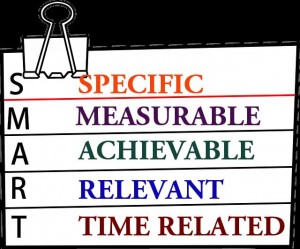The phrase Keep It Simple Stupid (KISS) was first coined by the US Navy in 1960 as a design principle.
The KISS principle states that most systems work best if they are kept simple rather than made complicated; therefore simplicity should be a key goal in design and unnecessary complexity should be avoided.
https://en.wikipedia.org/wiki/KISS_principle
How to apply Keep It Simple to Business processes and systems
 As businesses grow they have a tendency to overcomplicate matters. This is clearly evident in both public and private sector industry. In the UK the bureaucracy of our civil service is the butt of many jokes, but as tax payers it is no laughing matter. Bloated, over complicated systems slow business down and make it ineffective and costly.
As businesses grow they have a tendency to overcomplicate matters. This is clearly evident in both public and private sector industry. In the UK the bureaucracy of our civil service is the butt of many jokes, but as tax payers it is no laughing matter. Bloated, over complicated systems slow business down and make it ineffective and costly.
I like to use the analogy of the Titanic- they saw the iceberg but were too large, too slow to turn away in time. In fact, by turning partly they hit the iceberg with the weakest part of the ship- the army would say they exposed their flank- the most vulnerable part and suffered increased damage as a result.
The lean business model, with streamlined, simple but effective systems- ensures a company can react faster to impending threats. He who moves fastest, wins in a competitive economy. The trouble with systems is that as a business grows, they may not have systems in place that work for them any longer. Instead of doing an overhaul and establishing new, slim, efficient systems, they tinker with the existing ones. New “bits” are added, further layers of authorisation included and the original system that was fit for purpose becomes cumbersome and unwieldy. Far better to “rip off the sticking plaster” take the initial pain of investing in a new efficient system, than experience the slow down and long drawn out pain of a system no longer appropriate.
Keep it simple but smart
The SMART principle is usually applied to setting goals and objectives but is just as relevant to business processes.
S- for specific
Is the system designed for a specific job but being modified to do another job? Instant slow-down will be the result. As a business owner your time and efforts should be directed at marketing and increasing the bottom line. You want systems that “do what they say on the tin” exactly the job you want them to do with minimal time and effort on your part.
M- for measurable
Can you track the effectiveness of each of your business processes and systems? If a system has no metrics it could be draining your business of revenue- how would you know otherwise? This tracking data should be built into the system, not require further add ons that can cause slow down. So, your accounting system should automatically generate reports at the touch of a button and flag up anomalies and errors without you having to hunt for them
A-for Achievable
How can a system be achievable- well I would argue its operation must be acceptable to its users. Time is one of a business’ most precious commodities. If you or your staff spend an inordinate amount of time trying to make a system work then it is not achieving its objective. This is where the simple part of keep it simple is so crucial. Simple systems are not necessarily easy, they may take training to use- but once learned they are straightforward in their operation.
Example – a group sharing work area where employees collaborate on projects in real time. There are always rules to using such programmes and users will need to know what they are. However, once known, the actual operation of collaborative projects is updated in real time- there are interaction mechanisms built in for instant feedback and every key stroke is tracked. The business owner can actually “see” their project developing and who is making the most effective contributions. The online system becomes a virtual office – simple but effective and saves on costs for the business, enabling work at home employees.
R – for relevant, realistic, results based
As a business grows it attracts other industries who want to sell to it. It is a case of your success attracting sales people who see you as an opportunity! You do not need all the systems they want to sell you. The temptation when you have a business process problem or a system failure is to get a new one to deal with the issue. This may not be the best approach. Before spending money on whizz bang programmes that can do everything, (even make you tea?) analyse what aspects of the system are relevant to your business. Do the added features give you capacity for growth? Then they may be worth it. Can some of the bells and whistles be removed because, a) they cost more and b) you don’t foresee a need for them? What is the ROI on this system? Can the sales rep show you exactly how much you will save in manpower, costs, time by implementing this process?
T- for time based/sensitive/limited
Time is valuable – weigh up the cost of time saved down the line vs time spent learning and implementing the system. If the balance is off- then wait until the time is right.
Keep it simple with your business systems and save yourself headaches and loss of competitive advantage.

